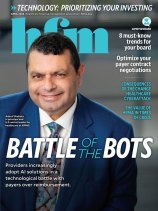David Burik
About the Author
David Burik
Latest Work
5 ways the ERM playbook for health systems is due for a rewrite
Business risk for health systems has continued to evolve amid huge changes affecting the industry, including those driven by COVID-19. Health system leaders should respond by revisiting their approach to enterprise risk management (ERM) to focus on five areas of risk where their ability to deliver healthcare cost effectively could be compromised: Labor shortages, capital planning amid ongoing change, energy consumption, cyber security and price transparency.
Rising risk due to COVID-19 requires a nimble response from health systems
The factors that define risk in healthcare have markedly changed with the pandemic, creating a need for healthcare executives to evaluate and update existing strategies and operations to address emerging areas of risk that previously had not commanded their attention.





